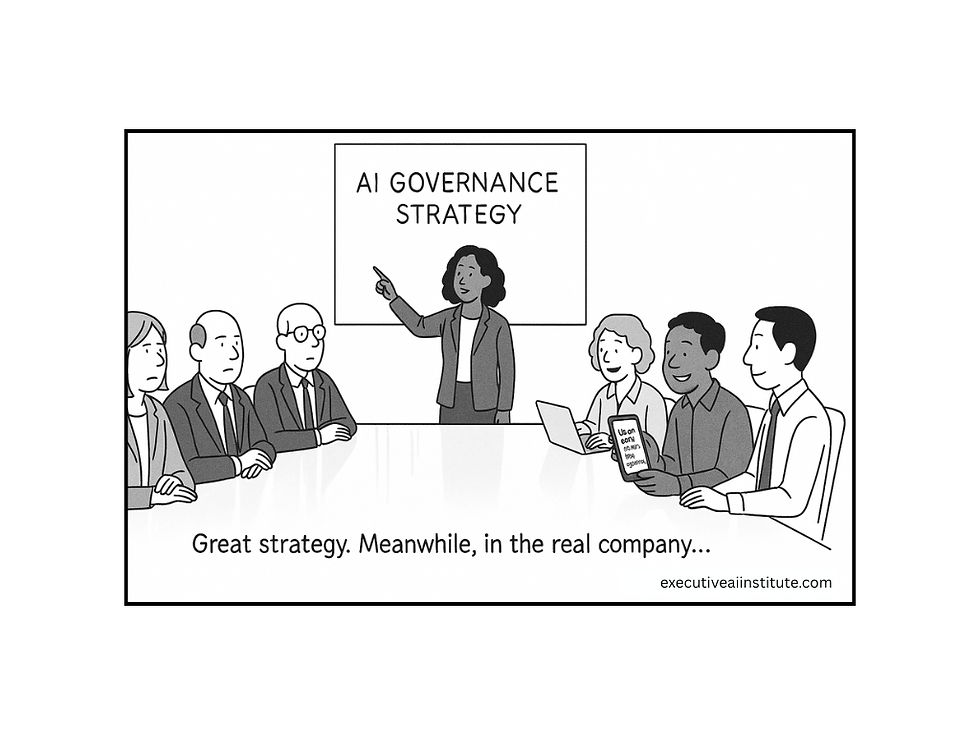Shadow AI: The Invisible Force Already Shaping Your Organization
- Jonscott Turco

- Jun 26
- 2 min read

You haven’t hired it. You didn’t approve it. You might not even know it exists. But make no mistake—
Shadow AI is already hard at work in your company.
A marketer uses ChatGPT to draft faster. A support rep relies on a plugin to manage ticket surges. A finance analyst cleans up data in minutes using generative tools. These aren’t hypothetical scenarios. They’re already happening—quietly, effectively, and without executive sign-off.
According to McKinsey, frontline teams are using AI tools three times more than most leaders realize. That’s not just a stat—it’s a flashing signal: your employees are moving faster than your policies.
This is Shadow AI. And it’s not a problem—it’s a wake-up call.
This Isn’t Disobedience—It’s Ingenuity
Employees are under pressure to move quickly and deliver more. So they’re turning to the tools that help them do it—often without waiting for formal permission. As someone who coaches leadership teams across industries, I’ll say it plainly:
"The biggest shift isn’t in the tools—it’s in the trust gap. Shadow AI is already part of your culture. The question is whether you’re guiding it—or simply letting it happen to you."
Shadow AI isn’t a threat to be quashed. It’s a signal of what’s working, and a chance to lead differently.
The Cultural Risk No One’s Talking About
Yes, Shadow AI raises concerns about cybersecurity, compliance, and data governance. But the more dangerous risk is cultural. When innovation is happening at the edges and strategy is stuck at the top, misalignment takes root.
"You can’t regulate what you haven’t earned the right to understand. Control without connection breeds silent chaos."
If leaders aren’t asking how teams are really using AI—not just what’s on the official roadmap—they’re already behind.
What Smart AI Leadership Actually Looks Like
Leading in the age of Shadow AI means:
Listening before regulating
Making experimentation safe before it’s formal
Building strategy around what’s already working on the ground
Some of the best use cases aren’t in your pilot program—they’re in a shared doc or a workflow someone cobbled together to survive last quarter.
Leadership today means noticing that, and elevating it.
Here’s the Bottom Line
Shadow AI is already inside your organization, quietly shaping how work gets done.
Your people aren’t waiting. The only real question is:
Are you close enough to lead them through it?
.png)



Comments